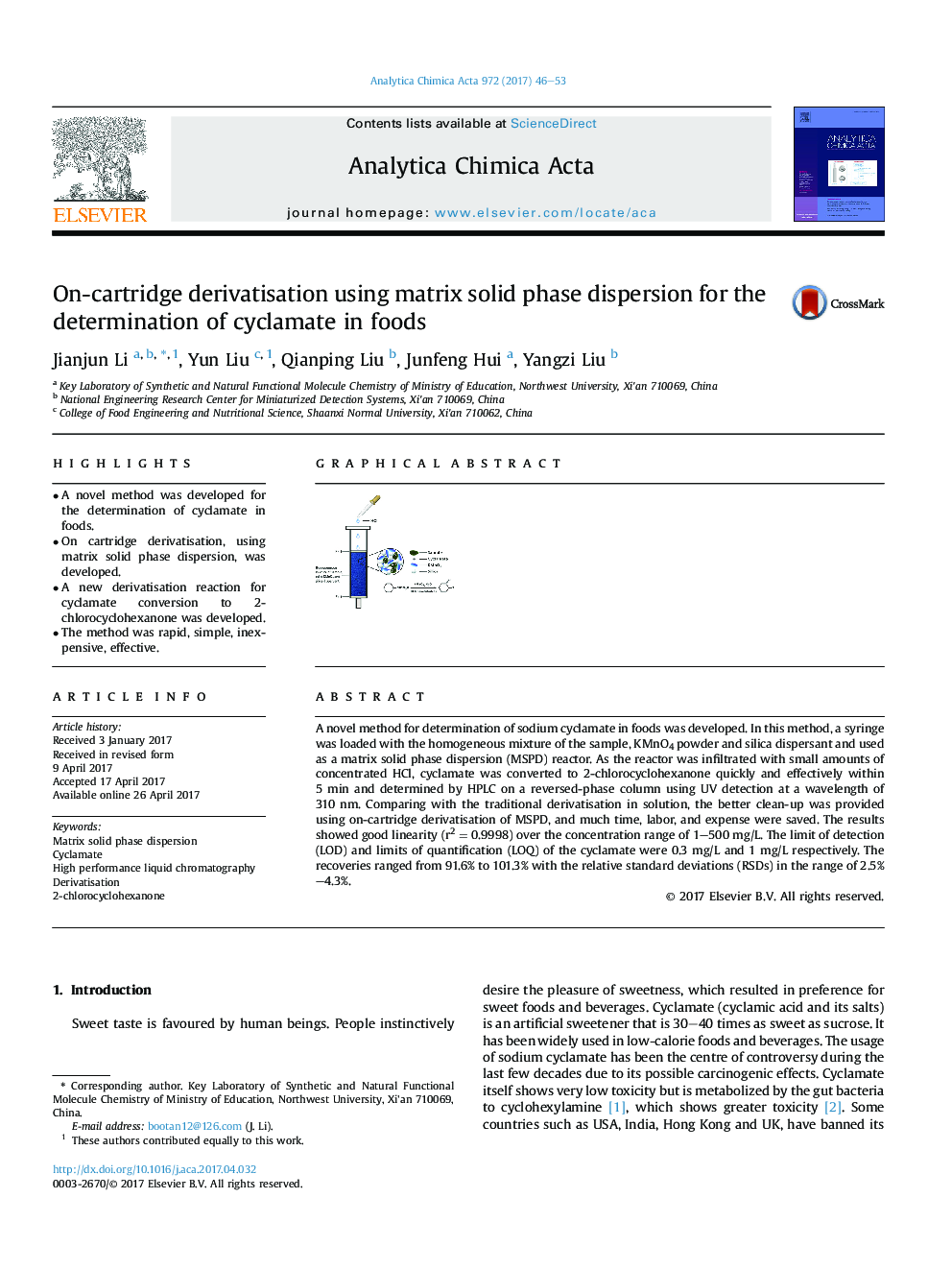| Article ID | Journal | Published Year | Pages | File Type |
|---|---|---|---|---|
| 5130796 | Analytica Chimica Acta | 2017 | 8 Pages |
â¢A novel method was developed for the determination of cyclamate in foods.â¢On cartridge derivatisation, using matrix solid phase dispersion, was developed.â¢A new derivatisation reaction for cyclamate conversion to 2-chlorocyclohexanone was developed.â¢The method was rapid, simple, inexpensive, effective.
A novel method for determination of sodium cyclamate in foods was developed. In this method, a syringe was loaded with the homogeneous mixture of the sample, KMnO4 powder and silica dispersant and used as a matrix solid phase dispersion (MSPD) reactor. As the reactor was infiltrated with small amounts of concentrated HCl, cyclamate was converted to 2-chlorocyclohexanone quickly and effectively within 5Â min and determined by HPLC on a reversed-phase column using UV detection at a wavelength of 310Â nm. Comparing with the traditional derivatisation in solution, the better clean-up was provided using on-cartridge derivatisation of MSPD, and much time, labor, and expense were saved. The results showed good linearity (r2Â =Â 0.9998) over the concentration range of 1-500Â mg/L. The limit of detection (LOD) and limits of quantification (LOQ) of the cyclamate were 0.3Â mg/L and 1Â mg/L respectively. The recoveries ranged from 91.6% to 101.3% with the relative standard deviations (RSDs) in the range of 2.5%-4.3%.
Graphical abstractDownload high-res image (115KB)Download full-size image
